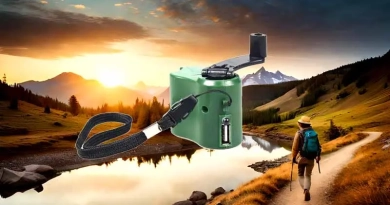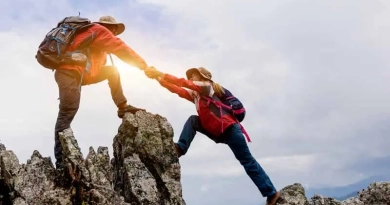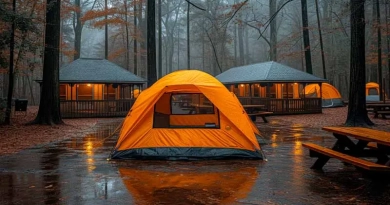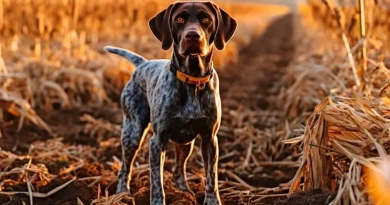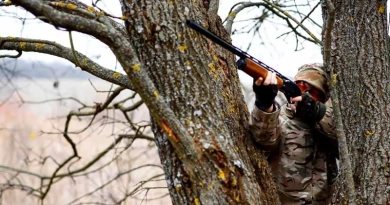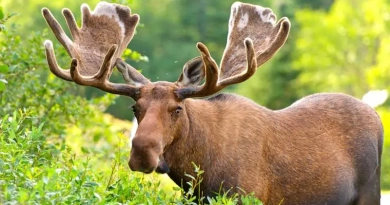The dawn was breaking over the horizon, casting a golden hue over the dense woods. I stood there, rifle in hand, feeling the cool air against my face. The question echoed in my mind: What are the best practices for deer hunting? It’s a query that resonates with every hunter, novice or seasoned, who seeks to master the art of the hunt. Deer hunting is not merely about the chase; it is about respect, skill, and understanding the wild.
Deer hunting is an ancient tradition, a pursuit that requires a blend of patience, knowledge, and respect for nature. The best practices for deer hunting encompass a range of techniques and strategies that enhance both the hunter’s experience and the ethical treatment of wildlife. These practices are essential for ensuring safety, success, and sustainability in hunting.
I recall my first deer hunt vividly. The excitement was palpable, but so was the uncertainty. There were so many factors to consider: the terrain, the weather, and the behavior of the deer. Over the years, through trial and error, guidance from seasoned hunters, and endless hours in the field, I learned that the best practices are rooted in preparation, ethics, and an intimate understanding of the deer.
Exploring the Options and Navigating Obstacles
The journey to mastering deer hunting is fraught with options and obstacles. Each decision, from choosing the right equipment to understanding deer behavior, can significantly impact the hunt. Here are some critical aspects to consider:
Choosing the Right Equipment
The array of hunting gear available today is staggering. Selecting the right rifle or bow, ammunition, camouflage, and accessories can be overwhelming. Each piece of equipment must be suited to the hunter and the environment. Here’s a deeper dive into this aspect:
- Rifle or Bow Selection: Your choice between a rifle and a bow depends on several factors, including personal preference, hunting regulations, and the terrain you will be hunting in. Rifles are typically used for long-range shots and are preferred in open areas, while bows are favored for close-range hunts in dense woods. The key is to choose a weapon you are comfortable with and proficient in using.
- Ammunition: The type of ammunition you use is crucial. For rifles, choosing the right caliber can make a significant difference in the effectiveness of your hunt. Larger calibers are generally better for deer as they ensure a quick and humane kill. For bows, selecting the right arrows and broadheads is equally important.
- Camouflage and Clothing: Blending into your surroundings is essential for getting close to deer. Camouflage patterns should match the environment you are hunting in, whether it’s forest, grassland, or snow-covered terrain. Additionally, wearing layers that provide warmth and moisture-wicking properties can help you stay comfortable during long hours in the field.
- Scent Control Products: Deer have an acute sense of smell. Using scent control products, such as sprays, soaps, and clothing washes, can help minimize your scent and avoid detection. Some hunters also use cover scents that mimic natural smells in the environment.
Understanding Deer Behavior
Deer are creatures of habit, but they are also incredibly adaptable and wary. Learning their patterns, such as feeding and bedding habits, is crucial. This requires extensive scouting and, sometimes, the use of trail cameras.
- Feeding Habits: Deer primarily feed in the early morning and late evening. Understanding what they eat and where they find food can help you identify the best hunting spots. In different seasons, their diet may change, which can affect their movement patterns.
- Bedding Areas: Deer prefer areas that provide cover and safety. These areas can be dense thickets, tall grass, or secluded woodland spots. Identifying these bedding areas is essential for setting up your stand or blind in a strategic location.
- Travel Corridors: Deer travel between feeding and bedding areas along specific routes. These travel corridors can be identified by looking for trails, tracks, and signs of repeated use. Setting up along these corridors can increase your chances of encountering deer.
- Behavior During the Rut: The rut, or mating season, is a prime time for hunting deer. Bucks are more active and less cautious during this period as they search for does. Understanding the timing and behavior associated with the rut in your area can help you adjust your strategies for maximum success.
Terrain and Weather Considerations
The landscape you hunt in and the prevailing weather conditions can make or break your hunt. Different terrains require different strategies, and weather can influence deer movement.
- Types of Terrain: Whether you’re hunting in forests, fields, mountains, or swamps, each terrain presents unique challenges and opportunities. In dense forests, close-range hunting and tree stands might be more effective, while in open fields, longer-range shots from blinds may be preferable.
- Weather Conditions: Weather can significantly affect deer behavior. Deer tend to move more during cool, overcast days and are less active during extreme heat or cold. Rain can also impact their movement, as can changes in barometric pressure. Planning your hunts around favorable weather conditions can increase your chances of success.
Ethical Hunting Practices
Ethical considerations are paramount. This includes respecting hunting seasons, using the right caliber or draw weight to ensure a quick and humane kill, and understanding the principles of fair chase.
- Respecting Seasons and Regulations: Adhering to hunting seasons and regulations is crucial for wildlife conservation. These regulations are designed to manage deer populations and ensure sustainable hunting practices.
- Fair Chase Principles: Fair chase emphasizes hunting in a manner that does not give the hunter an improper advantage over the animal. This includes avoiding baiting and ensuring that the hunt is conducted in a way that is respectful to the animal and the environment.
- Ensuring Quick and Humane Kills: Using the right equipment and aiming for vital areas is essential to ensuring a quick and humane kill. This minimizes the suffering of the animal and reflects the hunter’s respect for wildlife.
Overcoming Obstacles
The obstacles can be numerous. Inadequate preparation, poor understanding of deer behavior, and unethical practices can lead to failed hunts and a negative impact on the deer population. Overcoming these obstacles requires dedication and a willingness to learn and adapt.
- Preparation: Adequate preparation involves researching, scouting, and practicing with your equipment. The more prepared you are, the better your chances of a successful hunt.
- Education: Continuously educating yourself about deer behavior, hunting techniques, and ethical practices is crucial. This can be achieved through reading, attending seminars, and learning from experienced hunters.
- Adaptability: Conditions in the field can change rapidly. Being able to adapt your strategies based on changing weather, deer behavior, and other factors is essential for success.
Essential Resources and Tools
To implement these best practices effectively, several resources and tools are indispensable:
- Maps and GPS Devices: Detailed maps and GPS devices help you navigate the terrain and mark important locations such as feeding areas and stand sites.
- Trail Cameras: These are invaluable for monitoring deer activity and identifying patterns. Place them strategically to gather data on deer movements.
- Hunting Apps: Various apps provide information on weather, deer activity, and hunting regulations. They can also help you keep track of your scouting and hunting activities.
- Binoculars and Rangefinders: Quality binoculars and rangefinders are essential for spotting deer and determining the distance for accurate shots.
Conclusion: The Thrill of the Hunt
As the sun set, casting long shadows across the forest floor, I reflected on the journey that led me here. The thrill of the hunt is not merely in the pursuit but in the preparation, the respect for the animal, and the mastery of the craft. The best practices for deer hunting are not just a set of guidelines but a way of life for those who seek to connect deeply with nature and uphold the traditions of hunting.
For those who stand at the threshold of this journey, remember: deer hunting is an art that blends patience, knowledge, and respect. Embrace the process, learn from each experience, and let the wilderness guide you. The woods hold many secrets, and with each hunt, we come closer to understanding the wild and our place within it.


